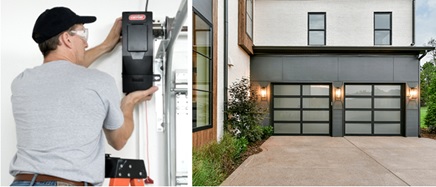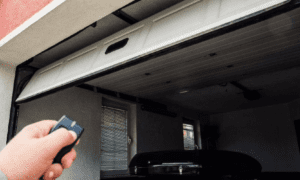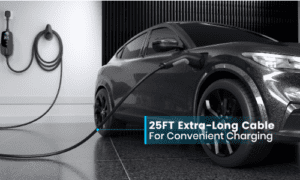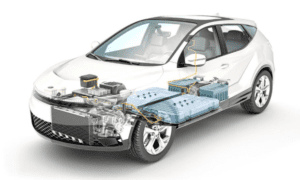A residential garage door opener is a motorized device that opens and closes your garage door with the push of a button. It’s a modern-day convenience that enhances security, comfort, and ease of access to your home. Whether you’re leaving for work or returning home with groceries, a reliable garage door opener saves you time and effort.
In this article, we will walk you through the types of residential garage door openers, how they work, important features to consider, and steps to install or upgrade one. We’ll also introduce a trusted name in the industry: Raynor.
Why a Garage Door Opener is Important for Your Home
1. Convenience and Ease of Use
With a garage door opener, you don’t have to manually lift or close heavy garage doors. A remote or mobile app can do it for you instantly.
2. Improved Home Security
Modern openers come with rolling code technology, preventing unauthorized access. Some also have smart features for monitoring your garage activity remotely.
3. Safety Features
Built-in sensors prevent the door from closing if something or someone is in the way, reducing the risk of accidents.
4. Energy and Time Saving
You save energy and time by operating your garage without stepping out of the car, especially useful in bad weather.
Types of Residential Garage Door Openers
Different homes have different garage needs. Let’s look at the most common types of garage door openers:
1. Chain Drive Openers
- How It Works: Uses a metal chain to pull or push the trolley connected to the garage door.
- Best For: Budget-conscious homeowners.
- Pros: Affordable and reliable.
- Cons: Noisy – not ideal for garages attached to living spaces.
2. Belt Drive Openers
- How It Works: Functions like a chain drive, but uses a rubber belt.
- Best For: Homes with living space above or next to the garage.
- Pros: Quiet and smooth.
- Cons: Slightly more expensive than chain drive openers.
3. Screw Drive Openers
- How It Works: Uses a threaded steel rod to move the trolley.
- Best For: Moderate climates.
- Pros: Fewer moving parts = less maintenance.
- Cons: Not ideal for extreme temperatures.
4. Wall-Mounted (Jackshaft) Openers
- How It Works: Mounted on the wall beside the garage door.
- Best For: Garages with high or obstructed ceilings.
- Pros: Saves ceiling space and works with high-lift doors.
- Cons: More costly, needs professional installation.
Features to Look for in a Garage Door Opener
Choosing the right opener goes beyond just lifting the door. Here are features to consider:
1. Horsepower (HP)
- Standard openers range from ½ HP to 1¼ HP.
- Lighter doors (like single-car garages) can use ½ HP.
- Heavier or double doors need at least ¾ HP or more.
2. Smart Technology
- Look for Wi-Fi-enabled models.
- Control and monitor your garage from your smartphone.
3. Battery Backup
- Ensures functionality during power outages.
- Important for areas prone to storms or blackouts.
4. LED Lighting
- Built-in lighting provides better visibility in your garage.
- Energy efficient and long-lasting.
5. Security Features
- Rolling code technology changes the access code each time the remote is used.
- Motion detection and auto-locking functions enhance safety.
Raynor: A Trusted Name in Garage Door Openers
If you’re looking for quality and performance, Raynor is one of the most respected brands in residential garage door openers. Their range of products includes:
- Quiet and smooth belt drives
- Space-saving wall-mounted units
- Advanced smart openers with MyQ® connectivity
- Battery backup systems
- Built-in LED lighting
Steps to Choose and Install a Garage Door Opener
Step 1: Measure Your Garage Door
- Measure the height and width of your door.
- Note the material (steel, wood, etc.), as heavier doors need more power.
Step 2: Choose the Type of Opener
- Use the guide above to pick the right opener type based on:
- Noise tolerance
- Budget
- Location of garage
- Door weight and size
Step 3: Choose Additional Features
- Decide if you need:
- Smart control
- Battery backup
- Motion-activated lighting
Step 4: Buy from a Trusted Brand Like Raynor
- Visit the Raynor website to view models and specs.
- Choose a certified dealer near you for expert advice.
Step 5: Install the Opener
You have two choices:
DIY Installation:
- Follow the manufacturer’s manual.
- Make sure to:
- Attach the opener securely to the ceiling or wall.
- Set up safety sensors.
- Test the system thoroughly.
Professional Installation:
- Recommended for complex systems (like wall-mounted or smart openers).
- Guarantees safety and proper setup.
Maintenance Tips for Long-Lasting Performance
Keeping your opener in top shape ensures long-term use and safety.
1. Regular Lubrication
- Lubricate the chain, screws, or belts every 6 months.
- Use recommended lubricants (not WD-40).
2. Test the Auto-Reverse Feature
- Place a block under the door and try closing it.
- The door should reverse when it touches the object.
3. Inspect the Sensors
- Make sure the photo eyes (on both sides) are clean and aligned.
4. Replace Remote Batteries
- If the remote response time slows down, check the battery.
5. Annual Professional Inspection
- A technician can check for wear and tear, electrical issues, and software updates (for smart models).
When Should You Replace Your Garage Door Opener?
If your current opener is more than 10-15 years old, it might be time to upgrade. Look for these signs:
- Unusual noises or jerky movements
- Lack of safety features (auto-reverse, photo sensors)
- No smart control or battery backup
- Difficulty opening heavy doors
An upgrade adds value to your home and improves day-to-day living.
Conclusion:
A residential garage door solution is more than just a motor — it’s a convenience, a security feature, and a modern home essential. From quiet belt drives to space-saving jackshafts, there are plenty of options for every kind of home.
If you’re looking for reliable, high-performance solutions, Raynor offers a wide range of residential garage door openers built for safety, durability, and convenience. Whether you’re building a new home or upgrading an old system, choosing the right opener will make your life easier and your home safer.

































